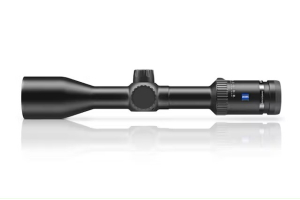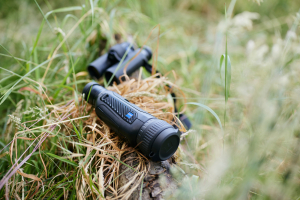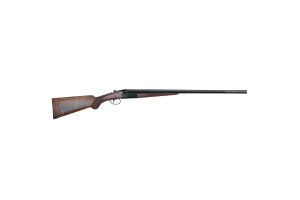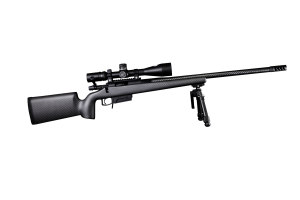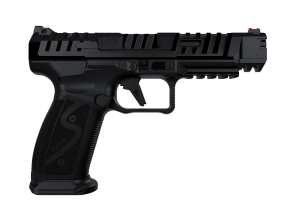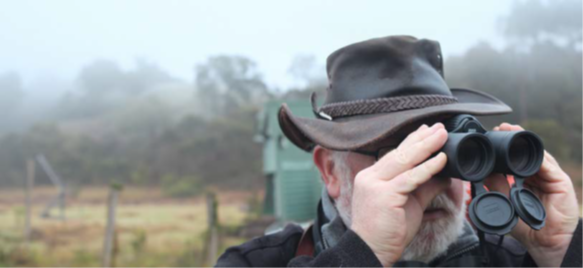
PRODUCT REVIEW - ZEISS SFL40 Binoculars
Daniel O'Dea was blown away by the latest ZEISS Binoculars
I’ve been in this shooting and hunting game for quite a few decades now and have to say one of the first things I worked out was that rifle and scope aside, there were two items I considered essential - quality binoculars and boots. Binos to find the quarry, boots to reach them. I vividly recall more than 20 years ago when, with great hesitance, I laid out the best part of a couple of thousand dollars, a king’s ransom back then, for a pair of high-grade European binoculars but I’ve never looked back (pardon the pun).
The difference was amazing. Optics in general have advanced greatly but back then it was literally the difference between looking at foliage and individual leaves on trees. When scanning for prey the depth of perception allowed me to look into the tree line at distance to identify game which might remain invisible when viewed through lesser optics. Over that time I’ve also learned the good thing about buying such quality optics is they do last, in my case 20 years. Mine are still going strong and when you break down the cost, at $100 a year they haven’t been a bad investment at all.
As a big fan of Euro optics I’m always pleased when a product arrives on my bench for review and Zeiss will always be a favoured option for many. In this case Outdoor Sporting Agencies supplied a pair from Zeiss in their SFL 40 compact binoculars, the latest in the Zeiss SF (Smart Focus) line, the L stands for lightweight. The theory is pretty simple - Zeiss have set out to provide the usual exceptional optical performance in a lighter and more compact form.
The eternal compromise for just about all hunting kits is weight over performance, the most obvious example being a heavier rifle perhaps offers more accuracy though you have to carry it. Same deal with binoculars - larger ones might be more powerful, have better light transition and be more durable but when they’re hanging round your neck all day, you may have second thoughts about carrying them. In order to shed weight without adversely affecting performance, Zeiss has reduced the lens diameter by just 2mm which allows the use of thinner lens elements at closer spacing than usual.
The result provides a 20 per cent saving in weight and 13 per cent reduction in volume compared to the normal Zeiss SF range. The company claims their SFLs are up to 30 per cent lighter than comparable competitor products.
The SFL category enjoys other standout Zeiss features such as the Smart Focus mentioned earlier, a concept which provides a larger and perfectly positioned focus wheel for both ease and speed of adjustment. Special new UHD (Ultra High Definition) coatings offer even higher levels of colour reproduction and natural fidelity. In wet weather, LotuTec coatings have rain drop beads to keep your view clear while T* multi-coating provides a high degree of light transmission in lowlight conditions.
As with most optics brands these days it’s always a bit of a challenge wrapping your head around all the ‘factory speak’, trademarks and unique selling feature acronyms, yet with Zeiss it all makes sense when you pick up these glasses and have a look through them. The SFL 40s come professionally presented in their blue-logoed white box containing the binoculars cocooned within a well-padded black Cordura soft case. Other kit includes rubberised front individual lens covers, a rear lens cover with carry strap eyes, the usual quality check ticket and product manuals plus two carry straps, one each for the binos and case.
The compact nature of these binoculars is self-evident and being 144mm long x 114mm wide they weigh just 640 grams. For glasses offering these features and performance, to me they present as about three-quarter size to what you might expect. The sizing is a welcome compromise as I find a lot of binos with the ‘compact’ tag tend to be a bit small in hand and not easy to hold and operate. In the field you want them heavy enough to sit steady when glassing over extended periods but not so weighty as to cause fatigue when doing this. The Zeiss SFL 8x40s are about perfect in this respect.
The 8x magnification behind a 40mm objective lens size provides an exit pupil diameter of 5mm and eye relief of 18mm. Light transmission is listed at 90 per cent with a twilight factor of 17.9. Adjustment allows for a pupil distance of between 52-74mm, so with the average human pupillary distance (distance between your eyeballs) being 63mm, that means almost everyone on the planet should be able to find a comfortable setting within this adjustment scale.
In use, the large centrally located Smart Focus ring is found intuitively when a grip is taken and the binoculars brought to your eyes. This adjustment ring provides adequate resistance to allow for precise focus tweaks while the oversized nature of the ring itself equally provides sufficient mechanical advantage to obtain such fine alterations with ease. And still on focus adjustment it’s worth noting a smaller rubber ring the full diameter of the righthand side ocular housing provides +/- 4 diopter modification so you can balance out any difference in focus between both eyes.
For those unaccustomed to the process and similar to most binos offering diopter adjustment, to alter in this case you’d close your right eye and focus the binoculars to be perfect for your open left eye. Closing the left eye and maintaining the current tuning point on the main focus ring you then use the diopter adjustment to fine focus the right eye, balancing any difference between the two. With the diopter difference now set, focusing using the main focus ring for varying distances should remain in balance for both eyes.
A generous field of view of 140m at 1000m has a lot of ground covered when glassing far afield but up-close focus can be achieved as near as 1.5m. It’s great for birdwatching or close observation from a stand and could also be handy for finding lost brass. Of course the binoculars are nitrogen filled and in this case water resistant to a pressure of 400 mbar, research telling me this is equal to roughly the pressure encountered when submerged in a little over 4m of water. So in general use, inclement conditions, hosing mud off or falling into a creek with them isn’t going to pose a problem.
I strapped the Zeiss SFL 40s on to carry afield several times and they were a joy to use. With such quality optics it’s almost that feeling you have standing in an electronics store in front of the latest hi-tech TV when the picture on screen looks better and sharper than real life. In the case of the SFL 40s it’s real life only clearer. At dusk and at night they were equally impressive and last November proved popular when the kids and I stood in the dark to watch the lunar eclipse. We could just about make out the US flag Neil Armstrong left up there!
A quality set of binoculars are a must for anyone in the shooting sports and once owned you’d be surprised just how many times you might also use them outside those endeavours. The SFL 8x40s are one option in a fine selection of Zeiss binoculars with just about something for every application.
The SFL 40s retail for around $2500 but you’ll still have change out of that if you shop around. It may sound a lot but it’s a quality that’ll last a lifetime.
Published by SSAA
August 2023 Australian Shooter, written by Daniel O’Dea
The most striking improvement has been in the trigger mechanism as those earlier Turkish models were fitted with quite an agricultural affair, though this latest Italian made gun has left that well and truly behind with triggers nicely weighted and very responsive. For a shotgun priced below the $1900 mark it represents good value and, with a five-year warranty, peace of mind is assured. So let’s take a look at the Webley & Scott Vantage Sporter 12-gauge shotgun.
Barrels
These are impeccably blued with no sign of residual solder or flux, something which had been noticeable on Turkish-made models I reviewed 10 years ago. The side ribs run the full length without being ventilated while the top ventilated rib measures 5mm and features a brass bead at the muzzle. There’s no-mid bead which was a little disappointing for a Sporter but this can be fitted aftermarket at an affordable price if desired.
At the muzzle end the barrels are fitted with interchangeable choke tubes, five provided with the gun and all fully internal fitting and measuring 50mm. The flat spanner for removal of the chokes is functional though I’d favour an aftermarket Briley speed wrench for improved ease of use. At the chamber end the gun is suited to 76mm or 3" chambered cartridges. This is handy for use in water-fowling but be aware the instruction book advises no tighter than half choke when using steel shot as the gun is steel shot proofed for High Performance loads. The sides of the monobloc have an interesting jewel polishing pattern to retain lubricants which is a bonus.
The ejectors are automatic and generally well-timed, occasionally ejecting both shells after only one barrel has been fired. This is a tad frustrating but something which can be easily adjusted by a competent gunsmith or under the five-year warranty, so not a major concern just an occasional nuisance. The barrels are finished well beyond what I found on earlier Turkish-made guns, a credit to the Italian manufacturer and of course Webley & Scott’s quality assurance.
Receiver
Engraving about the stylish receiver is imposed by a spark erosion process. There were a few stray marks on the receiver but overall the scroll engraving suited the gun perfectly, remembering the latest model Vantage sells for below $1900. It’s an entry level affair so far as a sporting shotgun is concerned but given the Vantage’s attributes, including the marvellous Turkish walnut, this is a reasonable purchase if not just for a field gun (more on that later).
Design of the top lever is excellent with a little engraving to give a firm and positive action. The safety catch/barrel selector is on the top tang, a traditional position for many modern guns and convenient location for quick barrel selection or to apply the safety when required.
Design of the trigger-guard and triggerfoot is very good, affording plenty of room for those who shoot with thin leather gloves. The triggerfoot isn’t adjustable for length of pull but sufficiently placed and comfortable for most shooters. Trigger pulls were a little heavy at just over 5lb each (2.268kg) and I reckon I’d have my gunsmith lighten these to 4lb or even 3½lb if using the gun in competition.
One feature I really like is the fact the triggers are mechanically activated compared to the inertia triggers found on most modern guns. Mechanically activated triggers allow for a second shot in the event of a misfire, whereas inertia triggers provide nothing unless you’re super-fast on the barrel selector. With inertia triggers, if the first barrel misfires the selector and cocking mechanism won’t allow a second shot to be fired so I view the mechanical system as a huge advantage, especially if you take it out in the field.
Stock and fore-end
The stock and fore-end are made from quality Turkish walnut you may not even find on a $7000 gun with the grain, colour and character just superb. The European style cheekpiece on the left of the stock (for a right-handed shooter) is a classic touch which gave the gun a good mount, with my preferred right eye looking straight down the rib.
Density of the wood is another plus and helped balance the Vantage perfectly. I was also impressed to find a slip pad attached to the butt of the stock, this being a style of recoil pad with a plastic cap on top to let clothing slip away as the gun is mounted. I feel not enough people practice correct gun mounting whereby the stock is lifted outward as the mount begins then brought into the shoulder which doesn’t require such a butt pad style. The stock doesn’t have an adjustable comb-piece which can cost an additional $350-$500.
Out and about
The Vantage Sporter performed well on more than several rounds of sporting clays, with a few friends who fired it remarking on how light it felt at 3.4kg (7½lb). The gun moved fairly quickly, felt well balanced and despite the triggers being a little heavy were a great improvement on earlier models reviewed. I used the gun to shoot a few quail in season and found the chokes hard-hitting and very even in their pattern using Clever size 8 Trap loads supplied for testing. I didn’t have a chance to try it on waterfowl but I think using HP steel shot loads travelling in excess of 1500fps you’d need every bit of comfort from that recoil pad. Shooting lighter 28-gram Clever loads was a pleasure on clays and quail, with next to no recoil and superb patterns from the short 50mm choke tubes.
At around $1890 over the counter, this new-model Webley & Scott Vantage Sporter represents excellent value all things considered, being a lightweight little shotgun offering additional versatility for hunting that could be quite comfortably carried all day.
Published by SSAA
August 2023 Australian Shooter, written by John McDougall
